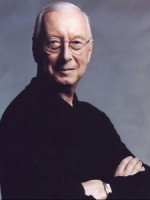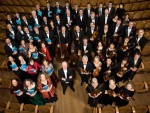Title
Subhead
“The old days are over,” proclaims esteemed conductor and musicologist William Christie, referring to the demise of an era when “a symphony orchestra could play a Bach 'Brandenburg Concerto' in the same way they play Mozart or Brahms.” Christie himself is no doubt part of the reason discerning listeners now expect a Bach concerto to be performed in a distinctly different manner from music composed in later eras. Since the 1970s, Christie’s efforts to shed light on the performance practices of the 17th and 18th centuries have been contemporaneous with a rising public appetite for Baroque music. It’s not just the composers that are in demand, however, but the conductors, scholars, and musicians who can bring a historical perspective to bear when interpreting a score. Growing legions of early music enthusiasts now look for telltale signs that performers have done their research, evident in the use of period instruments, embellishments (ornamentation), and improvisation, among other things. While Christie himself avoids the moniker “authentic,” he has been a tireless advocate of the stylistic tools that best serve the composers’ intentions.
Body
A select group of Juilliard students will have the chance to immerse themselves in Baroque techniques when Christie and artists from his ensemble, the Paris-based Les Arts Florissants, arrive at Juilliard this March to launch a two-part residency, Christie’s first such engagement at an American conservatory. Interested musicians studying flute, violin, viola, harpsichord, cello, organ, and voice had the opportunity to audition for Christie at the end of last month. Those selected will participate in an in-depth, weeklong workshop in the spring, involving the preparation of French Baroque repertoire, with a special focus on the composers Marc-Antoine Charpentier and Jean-Baptiste Lully. Participants will be loaned period instruments—tuned to a common Baroque pitch of A=415, nearly an entire half-step lower than their modern counterparts—and subsequently take part in private coaching and group lessons, under the tutelage of Les Arts Florissants, culminating in a public master class at Paul Recital Hall. Juilliard will also be co-presenting a performance by Les Arts Florissants at Carnegie Hall in the spring, at which students can hear the group perform the same composers explored during the workshop.
This Baroque intensive, which will be repeated in January 2009, is also a first for Juilliard. Although music of this era has long been incorporated into the Juilliard curriculum, says Dean Ara Guzelimian, the workshop is part of an effort to add focus and refinement to this area of study. To that end, he said, Juilliard plans to launch a master's degree program in historical performance, starting in the fall of 2009. Joseph W. Polisi, Juilliard’s president, said that a director for the program would be announced sometime before the end of this school year, and in the meantime, the School will begin putting together a collection of modern replicas of period instruments that students in the program will be able to borrow. “Our aim is not to overshadow the early music movement that already exists in New York,” President Polisi said, “but to complement it.” He said that, to start, the program would focus mostly on music of the 17th and 18th centuries and would involve not only the School’s Music Division, but Dance and Drama as well.
Christie's residency at Juilliard is an indicator of how far the early music scene has evolved since Christie, 63, founded Les Arts in 1979, following a time when (as he notes) textbooks referred to Baroque music “as if it were a dead art.” Les Arts Florissants is one of many groups established between 1970 and 1980 that launched a renaissance, so to speak, of early music, promoting the use of period instruments, composers, and performance styles that had been underrepresented—and sometimes misrepresented—on the concert stage. Today the early music scene is anything but moribund: The market is flooded with recordings of period music; the 17th-century composer Rameau is being welcomed on American opera stages; and more musicians are expected to adapt to Baroque stylistic practices. Historical performance is truly in today’s mainstream.
But what separates a specialist in Baroque music from earlier generations of conservatory-trained musicians?
To Christie, the distinction is simple. In his view, the specialist recognizes that the composer’s intent is not represented, note for note, on the printed page; the performer is expected to “complete the score” on his or her own. That is, musicians properly schooled in the art of playing early music “know what to do with what’s not on the page,” he says, whether it’s adding trills and ornamentation even when none seems to be indicated, or taking liberties with rhythm, lengthening or shortening notes as needed.
This contrasts heavily with scores written for the 20th-century orchestra. “If you do something like this with a piece of Elliott Carter or Pierre Boulez, you get whipped!” says Christie, referring to the fact that contemporary composers “give everything,” in terms of tempo, dynamics, and, of course, the notes themselves. Guzelimian further explains that, in the era we call Baroque, “the performer had more latitude for ornamentation, interpretation, and improvisation” within the confines of a printed score. “A literal performance of Baroque music is only a limited picture of what the composer intended,” he says.
The added responsibility of “finishing” the score, when placed upon the musician’s shoulders, renders the role of a teacher even more important in the eyes of Christie. Artists who aspire to accurately emulate the Baroque style rely on a mentor to show them the myriad possibilities implied—but not explicitly documented—in the score. “If we’re going to take liberties,” says Christie, “and do things to the score that make the music come alive, then it best be done with someone who can guide us around the pitfalls.”
He concedes that pedagogy is not, strictly speaking, the only avenue to understanding what makes the music itself “more eloquent” than what is on the printed page. “There’s a lot to be gleaned from musicological reference,” he points out, noting the amount of writing that’s been done both by contemporary scholars and by those who experienced the music firsthand. The fact that centuries have elapsed between the period of interest and the dawn of recording technology would seem to preclude any speculation about how this music sounded to the ears of listeners when it was first created. However, enthusiasts like Christie have a particularly fruitful source of clues.
“You listen to the instrument itself,” he reveals. To Christie, an historic instrument is a direct conduit to the past. Access to period instruments (and modern reconstructions of them) enables specialists to make music on approximately the same equipment as Baroque era musicians. This, in turn, affects their approach to sound production. As Juilliard students will discover upon trading their own instruments for 17th-century equivalents, the Baroque orchestra was geared for more intimate settings than today’s cavernous concert halls. Baroque violins, for instance, have gut strings rather than steel, shorter necks, no chin rests, and, most tellingly, bows that are concave instead of convex, resulting in softer, brighter, and more highly articulated sound. These differences directly inform how a player performs the music.
“All instruments are built essentially to play the repertory of the day,” says the maestro, who, despite his belief in the limitations of the big modern orchestra, is frequently called upon as a guest conductor by orchestras all over the world. Christie confesses that it’s not his ambition to conjure up a Baroque orchestra out of the Berlin Philharmonic, where he has been a regular guest conductor since 2002. “I have essentially three days of rehearsal. You can’t do much, but you can do a lot more than you could 25 years ago, because the musicians are interested!” The surging numbers of musicians who have cultivated an aptitude for early music make Christie’s impact on these performances much more potent. In these instances, he feels his role is to help the orchestra establish a “common rhetoric, that will make a Rameau suite more interesting, or allow them to think a little more about how one plays Mozart or Haydn.”
Similarly, Guzelimian notes that “the object of the Juilliard workshops isn’t necessarily to train specialist musicians as much as provide an extremely rich glimpse into the performance issues, styles, and practices of this music.” Christie is greatly enthused by the prospect of working with Juilliard students whom, he speculates, may have become enamored of Baroque music through an early encounter with Bach or Handel. “If there is a love of the repertoire, even if it’s not fully fledged or fully grown, you can do an awful lot.” Christie is particularly ardent about helping young people at the beginning of their careers, and has been training young singers through his workshop, Les Jardin des Voix, which he founded in 2002. Christie himself, who was born in Buffalo, N.Y., and studied at Harvard and the Yale School of Music, credits mentors such as Ralph Kirkpatrick at Yale and Erich Leinsdorf for planting the seeds of his own curiosity about early music.
Beyond the pleasures of exploring the Baroque repertory, Guzelimian also recognizes the practical benefits accrued to musicians willing to diversify their skills. “In the last 50 years, the musical world has gotten more sophisticated about specific performance styles. More and more these days, artists who have mastered a variety of techniques from different periods can present themselves as more complete musicians.”






